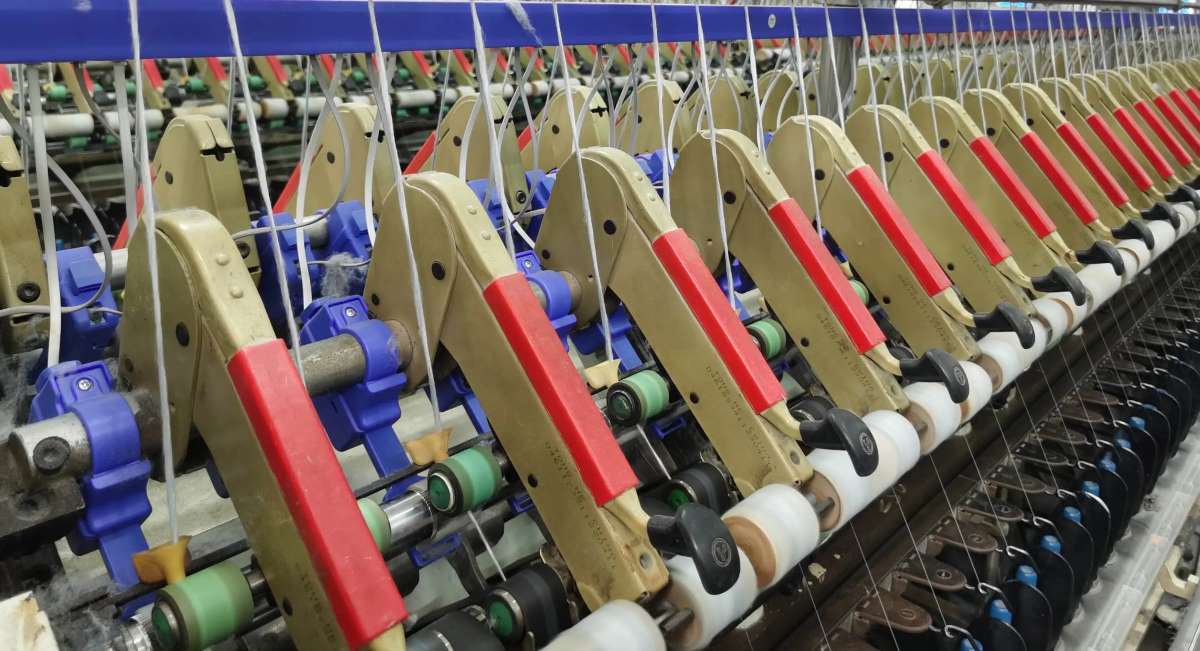Reimagining textiles is the flavor of the day, and contextualizing the overarching theme sets a clear narrative of transitioning textiles from once a very traditional industrial sector with a skewed labor-intensive nature to the tenet of being a legacy sector to optimistically sustainable textiles.
Adding one caveat here is that, the once-traditional world of textiles is undergoing a fascinating metamorphosis, and trends have lately started to be captured across the trade's value chain.
GenAI is the biggest disruptor, arguably for mankind since the internet continues to be a buzz and primary mover, and how could textiles be strange to it?
After a prolonged slump in the global textile economy, the semblance is that technology continues to come to the sector's rescue, ratcheted up by fueling innovations, efficiencies, and building manufacturing prowess and capabilities while craftsmanship remains at its core, Against all changed landscapes, the industry is now adopting & adapting to cutting-edge technology, leading to the advent of a tech-led paradigm leading to incredible new-age materials that auger well for a textile renaissance of sorts.
A closer look at all this is a revelation that, this renewed spirit of transformation goes way beyond mere streamlining processes or operational cost efficiencies. The tech toolkit has a vast armour and the long-term picture looks good as a sector is likely to be a big beneficiary given that digital tools, combined with advancements like modernization, artificial intelligence (AI), and automation, are igniting a wave of incredible creative possibilities/opportunities and moving the needle of textile quality up there, and that's a journey that every sector has to undergo.
Looking through the tech lens, there is quite a bit of buzz around technology holding promise in a dynamic, vibrant textile industry expected to ride on the evolutionary phase of tapestry woven with full-on innovations.
Unpacking some of the hot developments in the apparel sector is clothing that does more than keep you comfortable, All this is happening on the back of 'Smart textiles, integrating technology now directly into the fabric, exploiting tools like utilizing sensors and conductive elements to interact with the wearer's environment'.
Let us catch a piece of action showing how interestingly some of the textile titans and changemakers pioneering a future woven with innovation are demonstrating the magic of technology and making a difference in their corporate future journey.
Leading the charge in the textile industry's exciting transformation are giants like Nike, Adidas, and Patagonia. These companies are not just riding the wave of innovation, they're creating it.
Nike has redefined shoemaking with its wonderful Flyknit technology
Adidas is moving beyond its pendulum production prowess with its Futurecraft 4D initiative
Another development that stands out is the case in point in Patagonia, setting new benchmarks in sustainable practices and surprising everyone with upward potential.
Again, what makes these advancements a wow factor in the sector is that these "smart" garments can deliver new-age features such as monitoring health vitals, adapting to temperature fluctuations, wearable clothing, and even transforming into interactive/immersive experiences, setting the stage for the future of intelligent apparel.
Sustainability as the ultimate luxury: how realistic? The question does not arise whether overall environmental consciousness is driving the textile industry toward a more sustainable path or whether the regulators are pushing trade in this territory. It is like a chicken-and-egg story.
It is imperative to add the caveat here that, the trade's initiative is not just to minimize harm, but also to pioneer eco-friendly sustainable materials, processes, and practices that outperform conventional fabrics because the popular earlier belief was that textiles were heavy polluters, though these comprehensive measures that have been undertaken are a right step in the right direction.
Not only that, but the good bit is textile companies with rigor are exploring & sustainably discovering fibers and fabrics made from sustainable recycled materials, responsible organic sources, and processes that are conscious of restricting water footprints and energy resource conservation, ambitiously aimed at ensuring a green product and a greener future for the industry, all without compromising on performance and quality parameters.
As always, technological advancements in the textile industry too have their downsides, as concerns flagged by the experts include "Tech can take away more jobs than it can create in the textile industry."
Watered-down, growing concerns are also there, such as, Technology is killing human imagination! which naysayers are already saying is the case.
Change is the only constant, and given that the potential benefits outweigh the risks, digitization is business-imperative as it is a harmonic blend of technology and threads.



